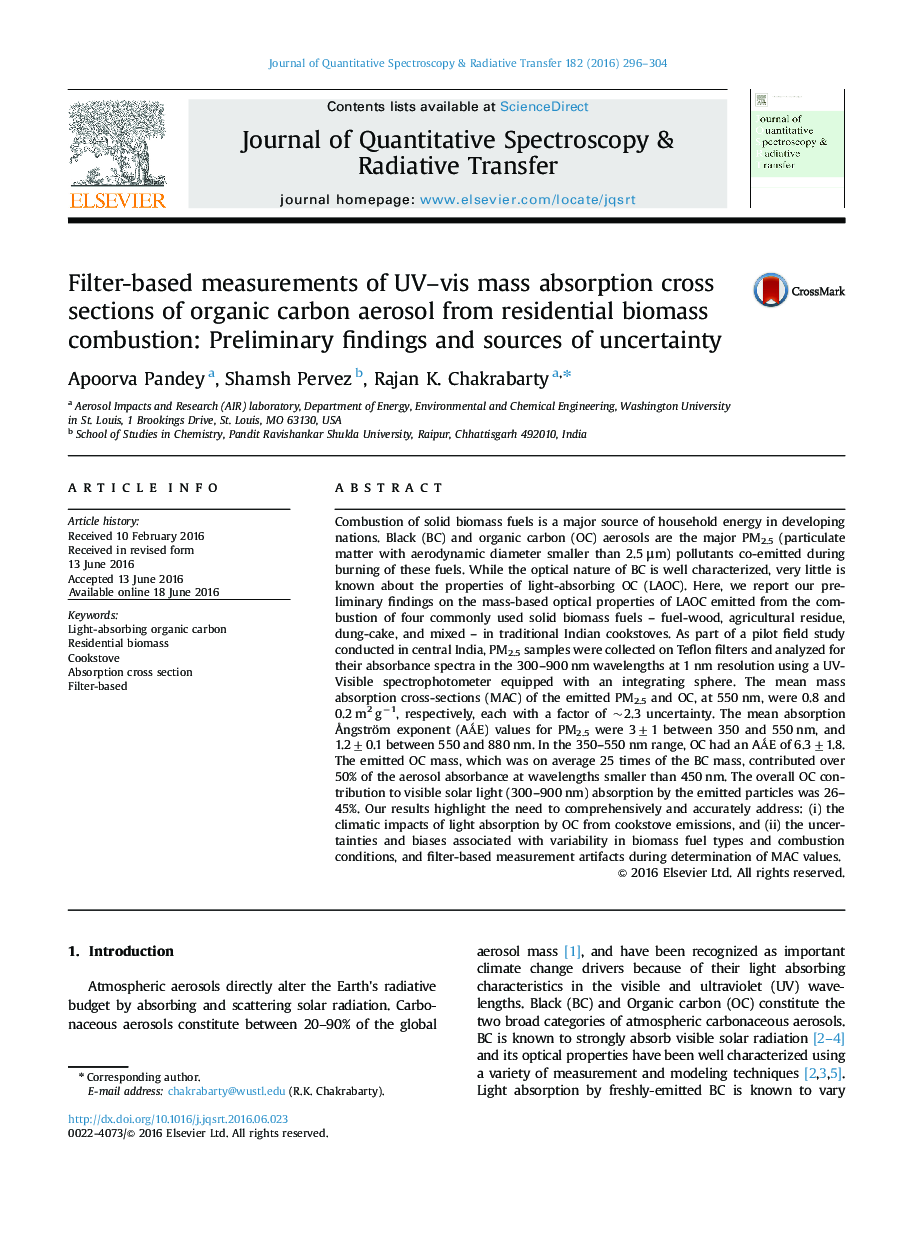| Article ID | Journal | Published Year | Pages | File Type |
|---|---|---|---|---|
| 5427564 | Journal of Quantitative Spectroscopy and Radiative Transfer | 2016 | 9 Pages |
Abstract
Combustion of solid biomass fuels is a major source of household energy in developing nations. Black (BC) and organic carbon (OC) aerosols are the major PM2.5 (particulate matter with aerodynamic diameter smaller than 2.5 μm) pollutants co-emitted during burning of these fuels. While the optical nature of BC is well characterized, very little is known about the properties of light-absorbing OC (LAOC). Here, we report our preliminary findings on the mass-based optical properties of LAOC emitted from the combustion of four commonly used solid biomass fuels - fuel-wood, agricultural residue, dung-cake, and mixed - in traditional Indian cookstoves. As part of a pilot field study conducted in central India, PM2.5 samples were collected on Teflon filters and analyzed for their absorbance spectra in the 300-900 nm wavelengths at 1 nm resolution using a UV-Visible spectrophotometer equipped with an integrating sphere. The mean mass absorption cross-sections (MAC) of the emitted PM2.5 and OC, at 550 nm, were 0.8 and 0.2 m2 gâ1, respectively, each with a factor of ~2.3 uncertainty. The mean absorption Ã
ngström exponent (AǺE) values for PM2.5 were 3±1 between 350 and 550 nm, and 1.2±0.1 between 550 and 880 nm. In the 350-550 nm range, OC had an AǺE of 6.3±1.8. The emitted OC mass, which was on average 25 times of the BC mass, contributed over 50% of the aerosol absorbance at wavelengths smaller than 450 nm. The overall OC contribution to visible solar light (300-900 nm) absorption by the emitted particles was 26-45%. Our results highlight the need to comprehensively and accurately address: (i) the climatic impacts of light absorption by OC from cookstove emissions, and (ii) the uncertainties and biases associated with variability in biomass fuel types and combustion conditions, and filter-based measurement artifacts during determination of MAC values.
Keywords
Related Topics
Physical Sciences and Engineering
Chemistry
Spectroscopy
Authors
Apoorva Pandey, Shamsh Pervez, Rajan K. Chakrabarty,
